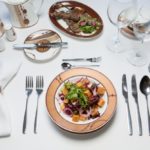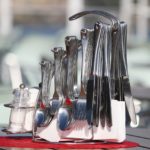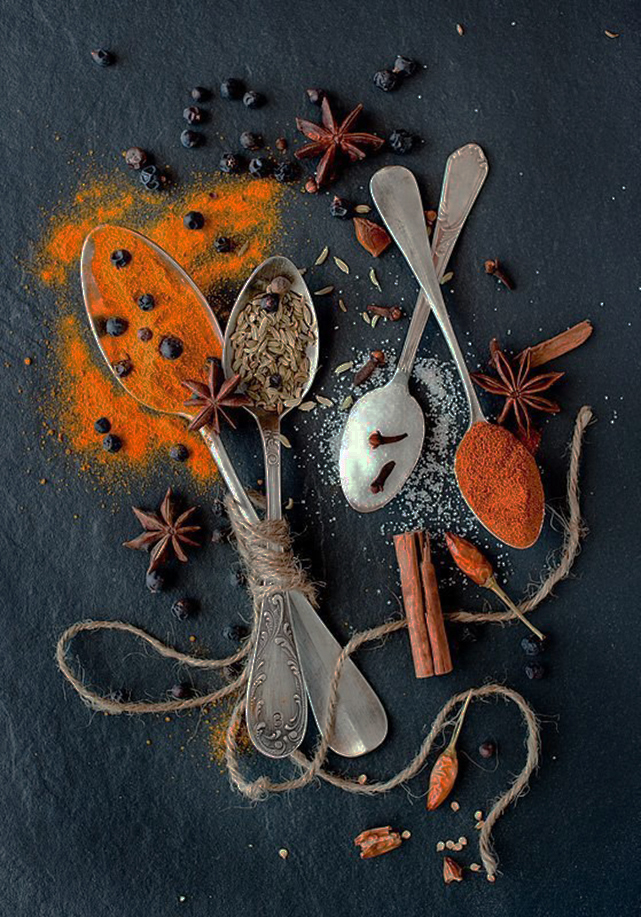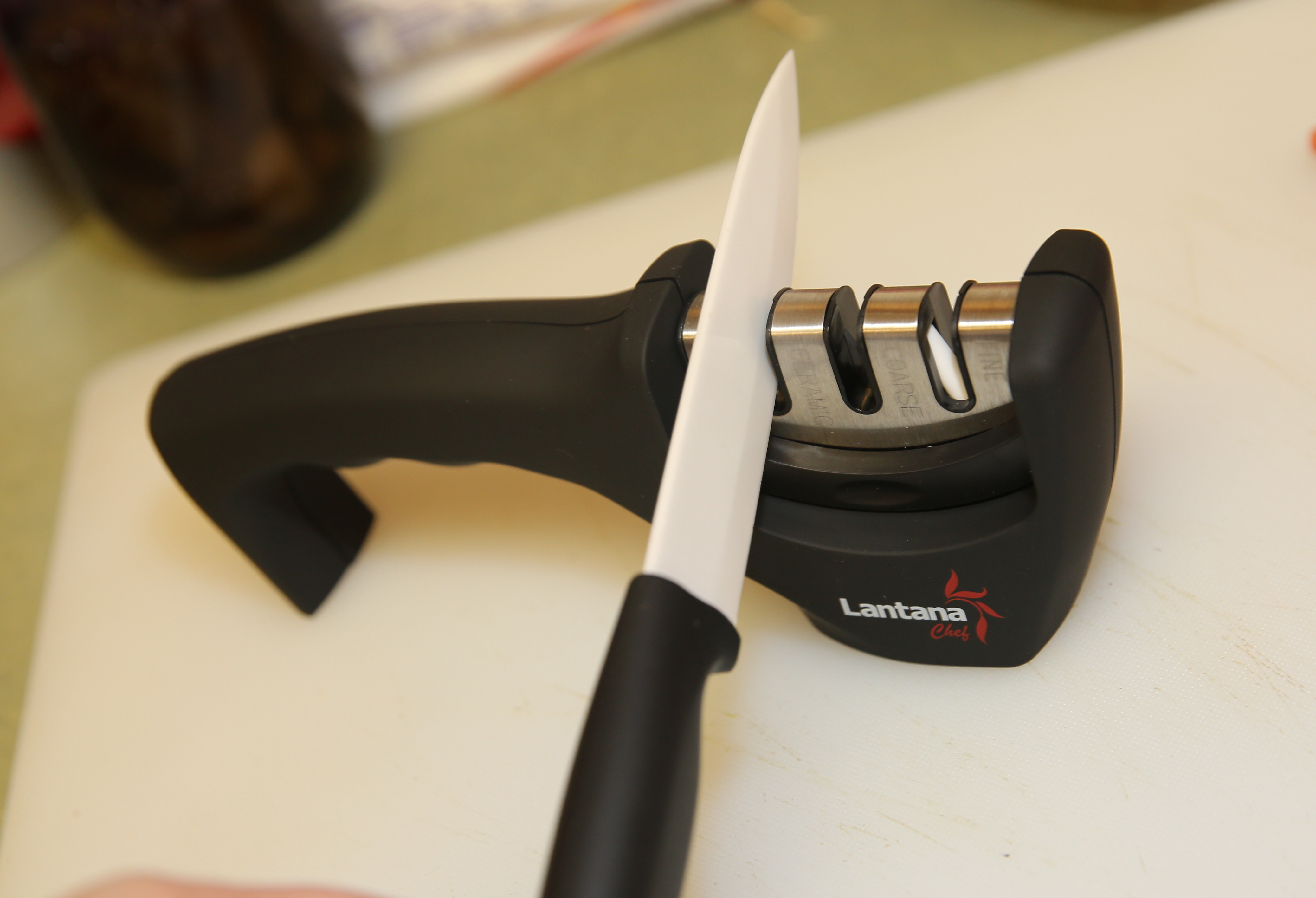Types of cutlery existing in the world
Cutlery is a whole set of different tools, the purpose of which is to make the eating procedure beautiful and comfortable. There are two groups of devices: main and auxiliary. Let's take a closer look at each of them.
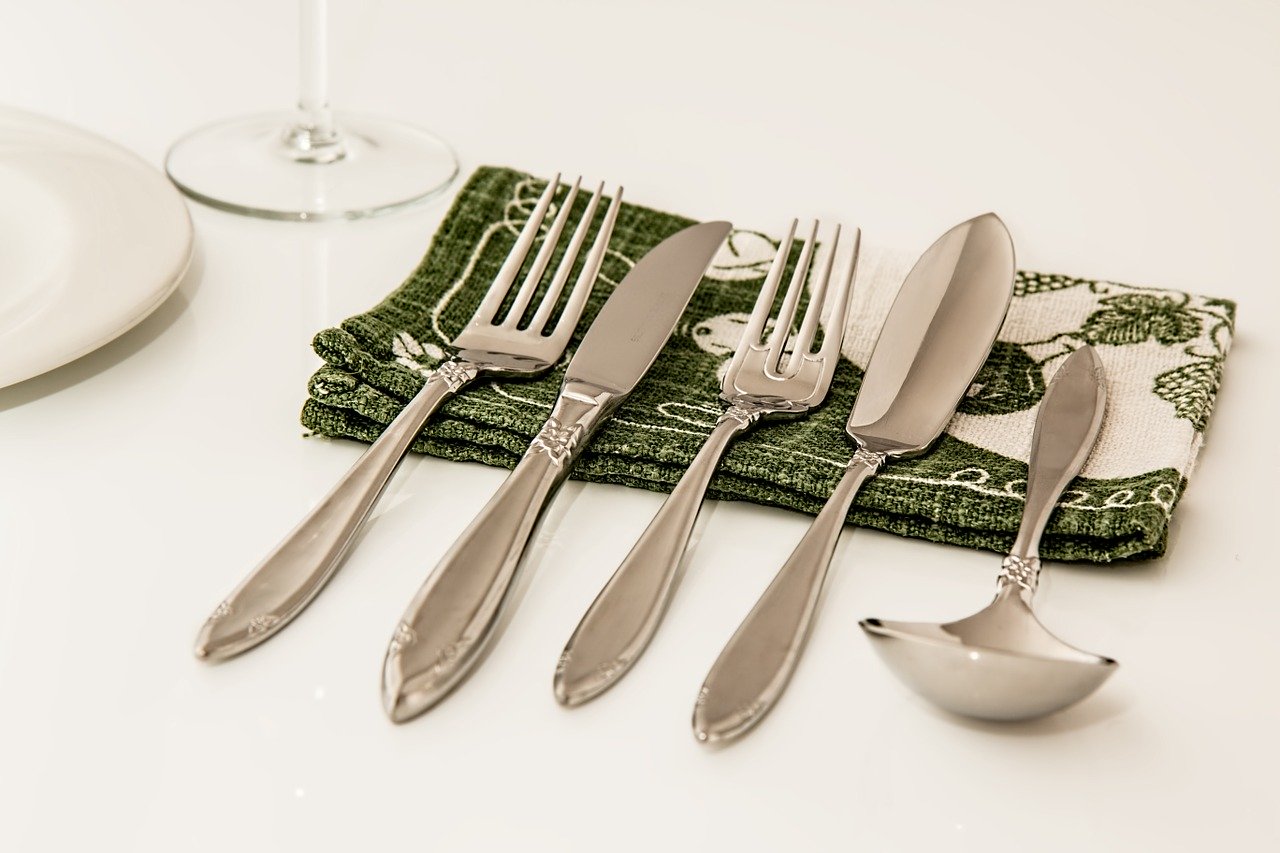
The content of the article
What are the main cutlery types?
Individual tools for daily use that are familiar to many of us. They are further divided into several groups:
- Canteens or standard. Essential for hot dishes. Used during every meal. Sometimes they are used to transfer food into portioned plates. Standard utensils include a knife, fork and spoon. Vary in size. The fork and spoon are usually slightly shorter than the knife.
- Snack bars. Needed for pancakes, cold cuts, sausages and other snacks. The standard knife length is 20 cm.
- Fish (knife and fork again). Used for hot dishes with fish as a base. This knife looks like a spatula, it is blunt (it will be very difficult to cut yourself). The fork has four tines. They are shorter than in the standard table version. There is a round depression in the middle of the fork, thanks to which you can easily remove the bones.
- Dessert. These are small instruments, the design of which is sometimes very original. So, the knife is narrow, but with a sharp tip. Its length is approximately 20 cm. The spoon is slightly shorter than the knife, the fork has only 3 teeth. Which of the suggested items to use depends on the type of dessert.For example, a knife and fork are used for pie, cheese, cake. A spoon is needed for ice cream, mousse, jelly, porridge, fruit, smoothies. A spoon is also necessary for dessert soup, which is served in broth cups.
- Fruit. Small in size. Designed for cut fruits. This fork only has 2 tines.
- coffee spoon. Used for drinking hot drinks (tea, cocoa, coffee). Also ideal for serving soft-boiled eggs and fruit cocktails.
- Sticks. In Asian countries, these devices are among the main ones, as they are used to serve a wide variety of oriental dishes. An important feature: if the meal does not take place in Asia, then the knife, fork and spoon familiar to Europeans are not removed from the table. They are left for those participants in the meal who do not know how to use chopsticks.
By the way! Basic utensils are needed during every meal, but you don’t have to lay them all out on the table at once. It is recommended to start from the dishes that you plan to serve during the meal.
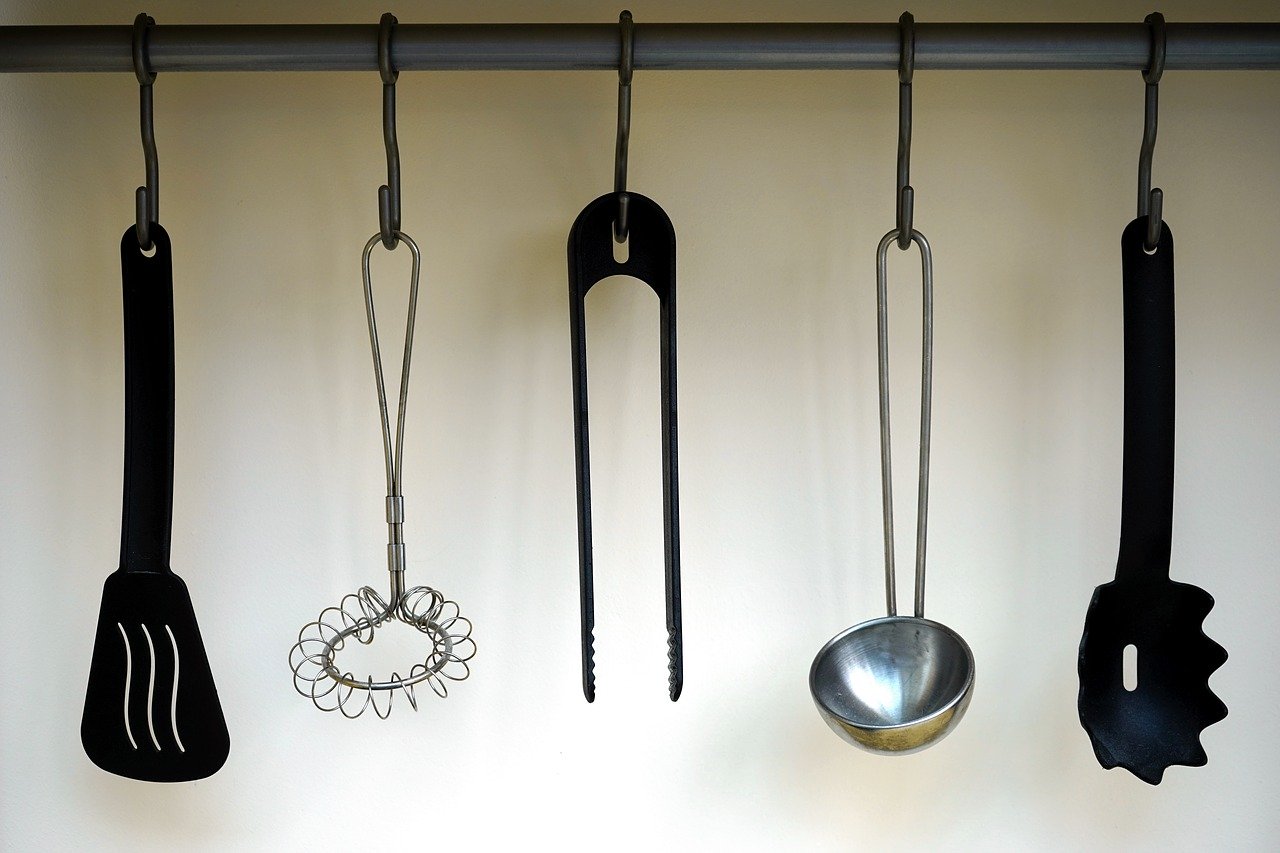
Types of auxiliary cutlery
They are needed for general use and are designed to “move” food into portioned plates. There are many auxiliary devices. Some of them look very unusual and are used when serving exotic dishes.
Important! To use these tools, you need some skill. However, it definitely comes with experience.
Among the most common are:
- Butter knife. It has a curved, wide blade. With this tool you can not only cut off a small piece of butter, but also transfer it to the edge of the plate.
- Knife-fork for slicing and serving lump cheese. A tool with teeth, shaped like a sickle.
- Lemon cutting knife. A fork is often found with it to transfer the lemon slice.
- Herring fork. There are only two sharp teeth on the device, which are used to pick up portioned fish pieces.
- Sprat device. This is also a fork that is suitable for any canned fish. This is an unusual instrument with a wide blade base and five teeth, the tips of which are connected by a bridge.
- Fork for mussels, oysters. This is a tool with three teeth, one of which is used to extract the pulp.
- Fork for shrimp, snails.
- Lobster igloo. A device with two small teeth, which are convenient for extracting pulp from the shell.
- Chill fork for hot fish dishes. It has three wide teeth that can be used to “hook” fish.
- Salad spoon. Used only for serving food from a common dish. However, in appearance, a salad spoon is very similar to a dining spoon (these utensils differ in size).
- Ladle. There are devices of different sizes. The ladle is used when serving liquid dishes (soups, goulash, etc.).
- Spoon for salt. A miniature instrument that “lives” in a salt shaker.
- Pastry tongs (big and small). If the former are used to transfer flour products, the latter are used to “transport” pieces of refined sugar, marshmallows, and chocolate.
- Nut Chopping Tongs and Ice Chopping Tongs. Devices with different purposes, but similar in appearance. So, for cracking nuts, a tool with two strong handles and recesses is used, and an ice maker — This is a U-shaped tool.
- Caviar spatula. With its help, the delicacy is transferred to individual plates. Looks like a small flat scoop.
- Rectangular blade. A flat device for “transporting” meat and vegetable dishes.
- Curly shoulder blades. One group includes tools for different purposes. So, there are spatulas with slots for casseroles, pieces of meat, fish, large quadrangular ones for confectionery, small ones for pates.
Each cutlery is useful in its own way, since for competent serving it is important not just to “put spoons on plates,” but to do it in accordance with the rules. Then any dinner can be turned into a reception worthy of a royal palace.

